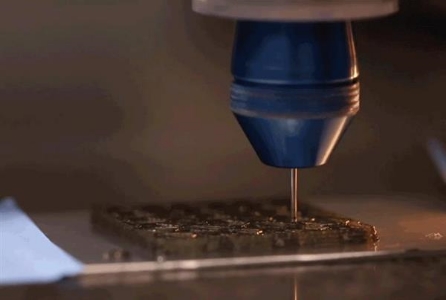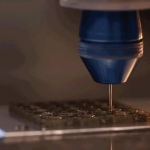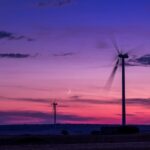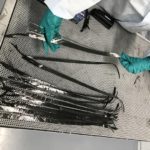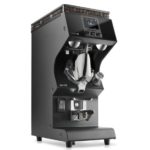Their novel method, termed ‘rotational 3D printing’, could have a broad range of applications. Given the modular nature of their ink designs, many different filler and matrix combinations can be implemented to tailor the electrical, optical and thermal properties of the printed objects. “Being able to locally control fiber orientation within engineered composites has been a grand challenge,” said the study’s senior author, Jennifer Lewis, professor of biologically inspired engineering at Harvard SEAS. “We can now pattern materials in a hierarchical manner, akin to the way that nature builds.” The key to their approach is precisely choreographing the speed and rotation of a 3D printer nozzle to control the arrangement of embedded fibers in polymer matrices. This is achieved by equipping a rotational printhead system with a stepper motor to guide the angular velocity of the rotating nozzle as the ink is extruded. “Rotational 3D printing can be used to achieve optimal, or near optimal, fiber arrangements at every location in the printed part, resulting in higher strength and stiffness with less material,” Compton said. “Rather than using magnetic or electric fields to orient fibers, we control the flow of the viscous ink itself to impart the desired fiber orientation.” Compton noted that the team’s nozzle concept could be used on any material extrusion printing method, from fused filament fabrication to direct ink writing to large-scale thermoplastic additive manufacturing. It can also be used with any filler material, from carbon and glass fibers to metallic or ceramic whiskers and platelets. The technique allows for the 3D printing of engineered materials that can be spatially programmed to achieve specific performance goals. For example, the orientation of the fibers can be locally optimized to increase the damage tolerance at locations that would be expected to undergo the highest stress during loading, reinforcing potential failure points. “One of the exciting things about this work is that it offers a new avenue to produce complex microstructures, and to controllably vary the microstructure from region to region,” Raney said. “More control over structure means more control over the resulting properties, which vastly expands the design space that can be exploited to optimize properties further.” “Biological composite materials often have remarkable mechanical properties: high stiffness and strength per unit weight and high toughness. One of the outstanding challenges of designing engineering materials inspired by biological composites is control of fiber orientation at small length scales and at the local level,” said Lorna Gibson, professor of materials science and engineering at Massachusetts Institute of Technology “This represents a huge leap forward in the design of bio-inspired composites.”
